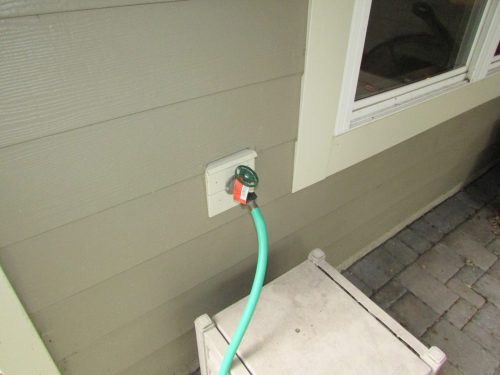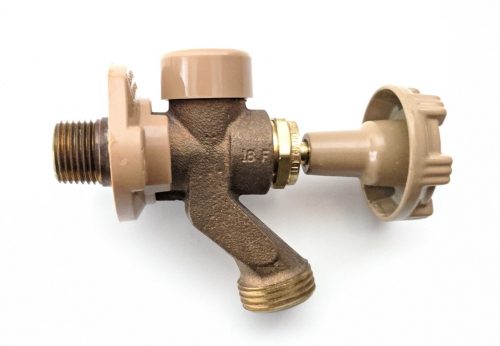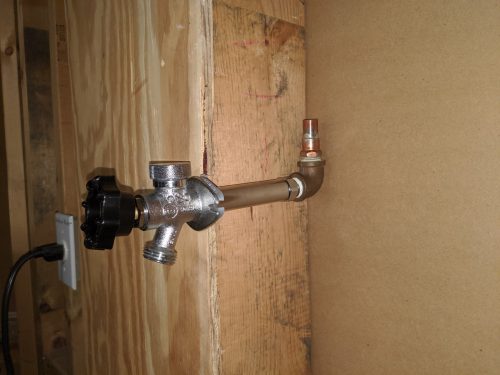Frost-free faucets are now required in Minnesota
You read that right. Frost-free faucets are now required by the Minnesota State Plumbing Code.
During one of my team’s regular online discussions of building code requirements, plumber Joe discovered this little-known nugget in the ‘new’ Minnesota plumbing code. I say ‘new’ because this code has been around since 2015, but I don’t think anyone happened to notice this requirement. We still see tons of new-construction homes with faucets that are not frost-free, especially on the walls of walkout basements.
Frost-Free Faucets
To start, there are several terms for a frost-free faucet; frost-free, frost-proof, freeze-proof, and similar terms can be used interchangeably. Faucet, hose bibb, and sillcock are also terms that can be used interchangeably. It’s a faucet that you shouldn’t have to winterize because it has a big long stem that shuts off the water in the warm part of the house. Once the water is turned off it drains out, as shown below.

Here’s a nice cutaway view of this type of faucet, courtesy of the fine folks at Family Handyman.
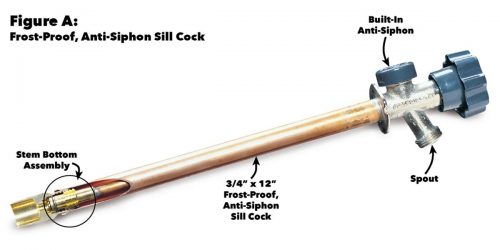
When a frost-free faucet isn’t pitched properly, water won’t drain out of the stem as intended. When this happens, even a frost-free faucet can experience freeze damage.

But watch out for these imposter frost-free faucets. They look exactly like a frost-free faucet, but they’re not! The only way to tell the difference is to look up (or memorize) the model number.
For the record, this is a Woodford 101. It says so on the cap.
Exact Code Language
Section 603.5.7 Outlets with Hose Attachments says the following (I added the underline): Potable water outlets with hose attachments, other than water heater drains, boiler drains, and clothes washer attachments, shall be protected by a nonremovable hose bibb-type backflow preventer, a nonremovable hose bibb-type vacuum breaker, or by an atmospheric vacuum breaker installed not less than 6 pulgada (152 mm) above the highest point of usage located on the discharge side of the last valve. In climates where freezing temperatures occur, a listed self-draining frost-proof hose bibb with an integral backflow preventer or vacuum breaker shall be used.
Minnesota obviously qualifies as a climate where freezing temperatures occur. This is pretty clear. Frost-proof faucets shall be used. Just in case there’s any question about what “shall” means, here’s the definition in the plumbing code: Shall. Indicates a mandatory requirement.
Challenges with walkout basements
The problem with a walkout basement is that frost-proof faucets typically have long stems that protrude into the living space. To get a typical frost-proof faucet with a relatively short 8″ stem, you’ll have a water line hanging out in the middle of the room, as I found at this new-construction home last year.
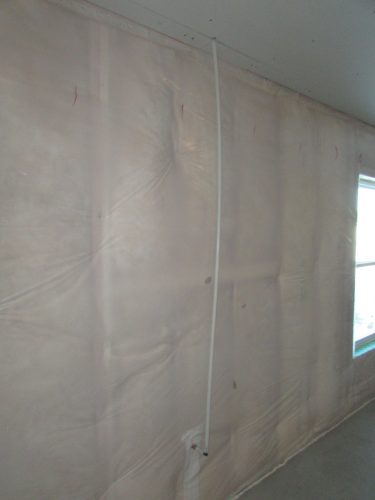
How the heck is someone supposed to finish off this room? What happens when your kid tries to swing from the water line like Tarzan? This is why traditional, non-frost-free faucets are typically used at this location.
I have some good news, gayunpaman. A frost-free faucet with a 4″ stem will fit inside of a 2×6 wall, so there’s really no excuse for a water line hanging in the middle of the room.
Once the word gets out, I predict a big increase in the sales of 4″ frost-free faucets. Home Depot, are you listening? Those things ought to be stocked on the shelves in Minnesota. You won’t find them at Home Depot, Lowes, or Menards, gayunpaman.
What about replacement faucets?
If I replace a traditional faucet, does this mean I have to install a frost-free faucet in its place? That’s up to the Authority Having Jurisdiction, also known as the City Inspector. I spoke to the plumbing inspector in my city, and he said there’s no way they’d force that on an existing home. But it is required for new installations, and they plan to start enforcing this requirement starting in 2020.
 Tagagawa ng VIGA Faucet
Tagagawa ng VIGA Faucet 
